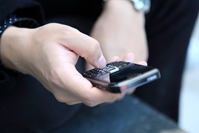Weather-related disasters are nothing new to businesses and communities, but how people are preparing for these occurrences is. Business continuity plans are becoming more common, but oftentimes, these plans meet short-term expectations—neglecting the fact that steps toward recovery may take months, even years.
What has changed over the years is how people communicate with one another. Social media and smartphones have made it easier for locals to report severe weather or provide resources to strangers over the internet. One report from the International Federation of Red Cross and Red Crescent Societies found that cell phone use after a disaster has saved many lives.
Mobile devices have been around for 20 years, but this tool has been shown to help countries during natural disasters because there are more cell phone subscriptions than people as of 2013. To put it in perspective, more than 300,000 people died in 2010 from weather-related disasters whereas only about 15,000 people died in 2012.
Cell phones have been saving lives because people are able to warn others in nearby towns and cities have begun implementing local weather alerts. Quartz reported that officials in India were able to successfully coordinate one of the "largest evacuation efforts ever" as Cyclone Phailin approached by reaching citizens with their cell phones.
How can cell phones improve business continuity plans
Whenever a natural disaster occurs, it is important that employees are on the same page. Do they come to work the next day? Are they able to work from home? Offering guidance for using this communication channel can expedite operations to get a company "back up and running" as soon as possible.
However, cell phones alone cannot answer every question, which is one reason why organizations may want to consider utilizing business continuity consultants. These individuals specialize in organizing a plan that can work for companies and towns of all sizes.

